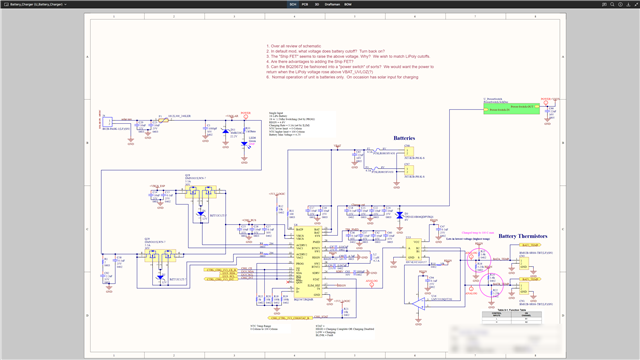Other Parts Discussed in Thread: TPS2121, BQ25620, TLV810E, TPS3899
Tool/software:
Hello
I have the schematic below. I had some questions related to it. They are as follows:
1. Over all review of schematic
2. In default mode what voltage does battery cutoff? Turn back on?
3. The "Ship FET" seems to raise the above voltage. Why? We wish to match LiPoly cutoffs.
4. Are there advantages to adding the Ship FET?
5. Can the BQ25672 be fashioned into a "power switch" of sorts? We would want the power to
return when the LiPoly voltage rose above VBAT_UVLOZ(?)
6. Normal operation of unit is batteries only. On occasion has solar input for charging





